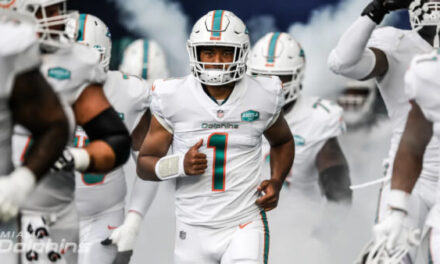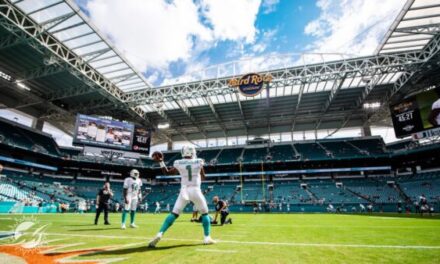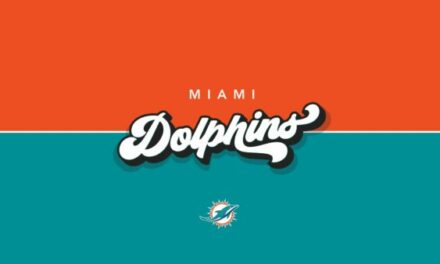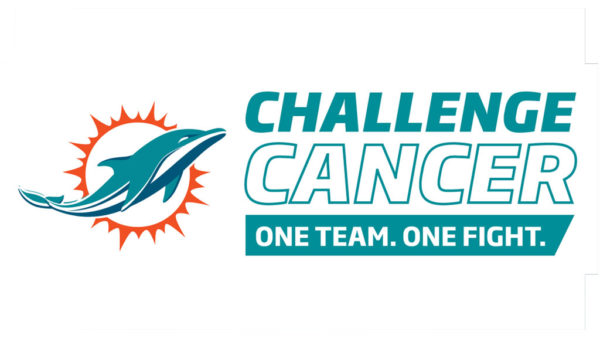The Miami Dolphins won a bit of a squeaker in Week 11 against the Las Vegas Raiders, moving their record to 7-3. The team was a heavy favorite coming off its bye but didn’t exactly play like it on offense.
Tua Tagovailoa finished with a respectable enough stat line (325 yards, two touchdowns, one INT, one lost fumble), but turnovers and poor execution consistently mired the offense.
The Dolphins’ offense moved the ball all game long. The same stuff that was working all year long was working on Sunday. The Raiders didn’t do anything special to keep the Dolphins out of the endzone — Miami did it to themselves.
Tagovailoa played a part in that, so let’s dive into the All-22 to see what went wrong on Sunday.
Tua All-22 Review vs. Raiders
The Good Stuff
Look how much the motion affects the Raiders’ safeties. Nice throw and Hill does the rest. pic.twitter.com/Lz57oklKMN
— Dante Collinelli (@DanteCollinelli) November 20, 2023
We’re tapping into last year’s article format for this one. Truthfully, we’d rather spend more time discussing what went wrong on Sunday because that’s clearly more interesting. What went right was the same stuff we’ve been preaching about for weeks.
However, good throws deserve to be pointed out, so let’s talk about a few.
The first touchdown pass Tagovailoa threw on Sunday was a wonderful concept executed to perfection. The key is to watch how the motion man affects the Raiders’ safety.
The pre-snap motion pulls the safety out of the deep half and into the box, leaving a ton of open space on Tagovailoa’s left. Tyreek Hill is running a dig route from the right to the left.
What’s funny about this play is that Tagovailoa throws the ball before Hill can even cross the face of the remaining deep safety to get into the open space created. Hill is so fast it doesn’t matter; he’ll get to the open space anyway.
For Tagovailoa, this was an accurate, on-time throw at a point in the game when the Dolphins needed a spark.
Love the back shoulder placement on this ball. pic.twitter.com/iRCVQNn39Z
— Dante Collinelli (@DanteCollinelli) November 20, 2023
Placement is one of Tagovailoa’s best traits, especially in the middle of the field. Every week, a few throws get you out of your seat.
This floater to Hill falls into that category. What makes this throw so good? For starters, pay attention to the traffic in the middle of the field. That’s a tight window Tagovailoa is trying to finesse the ball into.
Secondly, the underneath safety, Trevon Moehrig, does a nice job plastering Cedrick Wilson in the middle of the field and remaining a threat to come off his man. Most quarterbacks would’ve tried to lead Hill on this throw, allowing Moehrig to make a play on the ball.
Instead, Tagovailoa tucks the ball right on Hill’s back shoulder. The throw shields Hill from Moehrig, and he even breaks a tackle to pick up extra yards after the catch.
The Bad Stuff
Here’s another look at the INT: pic.twitter.com/UE8mYG8CmA
— Dante Collinelli (@DanteCollinelli) November 20, 2023
Let’s start with the interception. After the game, coach Mike McDaniel said it resulted from a miscommunication between Tagovailoa and Jaylen Waddle. Basically, Tagovailoa thought Waddle was going over the top of the deep safety, and Waddle went across the safety’s face.
That’s a helpful piece of information to have when evaluating this play. However, the fault of this play lies with Tagovailoa. Watching this from the All-22 angle makes it clear there’s no version of this play where Waddle wins running over the top.
The safety has insane depth on this play. He’s playing on the moon. Waddle sees that coming out of his break and adapts his route.
We could go around in circles all day about whether Waddle should’ve just done what he was supposed to do no matter what. But even Tagovailoa would tell you he should have identified the same thing Waddle did during the play.
Hobbs was on this the whole way. Would like to see the ball go elsewhere. pic.twitter.com/fnzAshIZDi
— Dante Collinelli (@DanteCollinelli) November 20, 2023
This play came much earlier in the game, and it’s mostly innocuous, but it serves a more significant point we’ll make later.
Watch the body language of the Raiders’ CB at the bottom of the screen. His hips are turned toward the middle of the field before the snap. He’s sitting there, waiting for Tagovailoa to throw an in-breaker.
Post-snap, Tagovailoa takes a quick drop, makes eye contact with the CB, and throws the ball anyway. That CB is Nate Hobbs, listed (generously) at 6-foot, 195 pounds.
He makes a pass breakup but doesn’t quite have the strength to move Waddle out of the way. A bigger corner likely picks this pass off.
Just stared down his guy way too much and almost got burned. pic.twitter.com/FtwlpxL4Fw
— Dante Collinelli (@DanteCollinelli) November 20, 2023
Here’s another turnover-worthy play. This throw is slightly less head-scratching because Robert Spillane makes a legitimately impressive read. However, it has the same base problem as the two plays above.
Spillane understands the Dolphins’ tendencies and makes an informed decision based on those tendencies. Tagovailoa just throws it into the window without checking Spillane at all.
No version of this pass ends in completion because Tagovailoa didn’t check the middle of the field before letting it rip.
Why Does This Happen?
So, what do all three of those plays have in common? It’s blind trust in the offense. We’ve covered this at length this season, but it popped even more on Sunday, especially in the second half.
What makes Miami’s offense special can also be its Achilles heel.
Tagovailoa is instructed to throw to spots. We’re not saying he can’t or doesn’t read defenses (because he absolutely does), but the offense centers around trusting the play calling and receivers to create space — no matter what.
Most of Tagovailoa’s interceptions this season result from the blind trust in the offense. It’s why most of them look so bad at first glance. He’s not reading the defense; he’s locked on and letting it rip, even if a defender is in a good position to make a play.
The same gusto allows him to hit Hill between three defenders for a chunk gain. However, he does it to a fault at times.
You have to ask yourself whether the risk is worth the reward. Given how explosive Miami’s offense has been this season, we’d say it is.
Dolphins fans got upset because national analysts said throwing INTs was actually a good thing when discussing Josh Allen’s struggles. INTs aren’t good, but it’s more nuanced than that.
INTs usually mean quarterbacks are trying to hit throws down the field, throws that result in big plays. They’re a necessary evil in an NFL increasingly centered around creating explosives.
In Tagovailoa’s case, yes, he’s making some easy mistakes. Of course, there’s a better balance between reading the defense and unquestioningly trusting the offense.
But tipping the scale too far in the other direction will rob the Dolphins’ offense of what makes it unique in the first place. Our advice?
Call the bad plays out when you see them, but understand the full context of what they represent in the big picture.
Conclusion
What does all of this mean? Honestly, this game isn’t worth overanalyzing. The Dolphins shot themselves in the foot all day long. Turnovers, penalties, missed field goals — you name it, they did it.
Tagovailoa wasn’t great in the second half, but he didn’t play horrific. He played what we’d consider a typical game, but the turnover variance wasn’t on his side.
If you read this column every week, you know the “blind trust” in the offense issue isn’t new. It was just especially bad against the Raiders.
Tagovailoa just didn’t quite have his A-Game on Sunday. Besides the throws we highlighted above, there were also missed open receivers in critical short-yardage situations.
It happens. Not every game can be your best. Still, Tagovailoa played well enough for the Dolphins to win on Sunday. After this performance, there’s no reason to move the needle in either direction.
Bring on the Jets.














